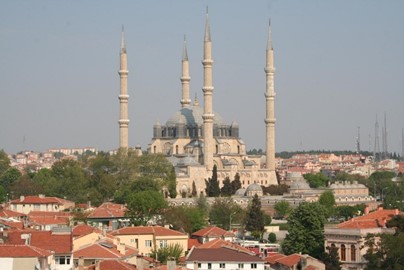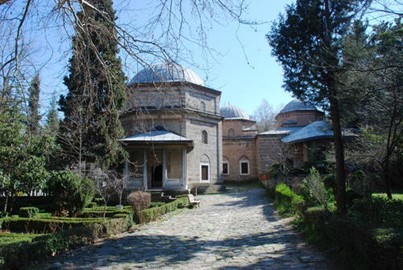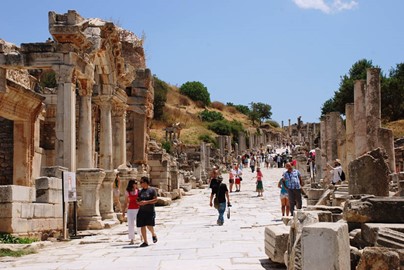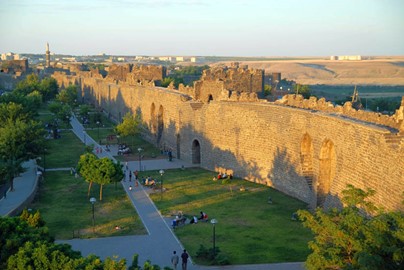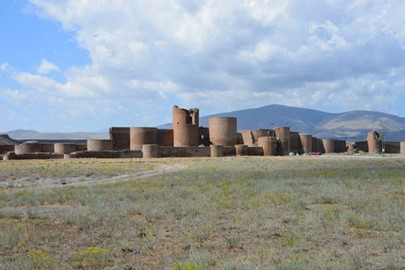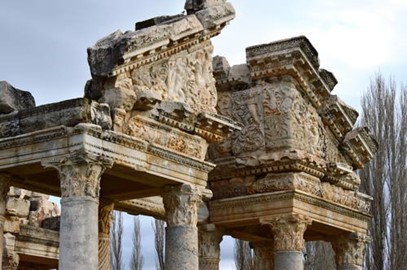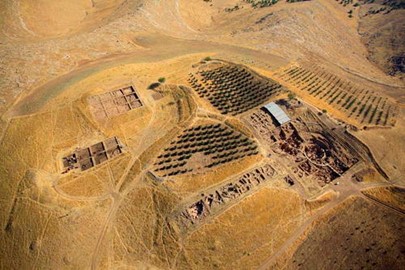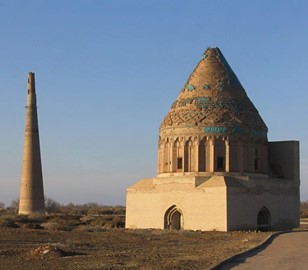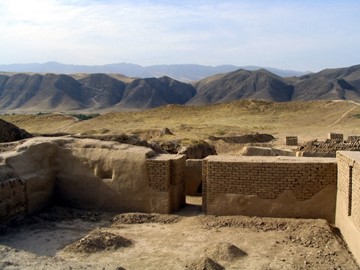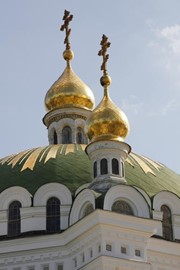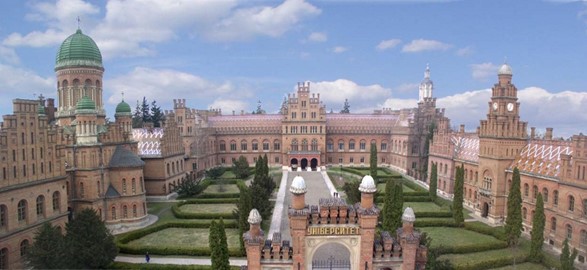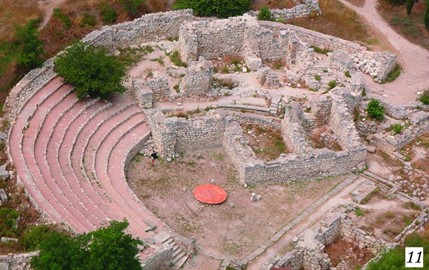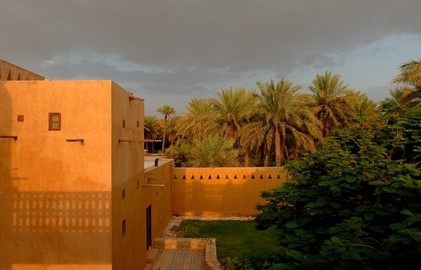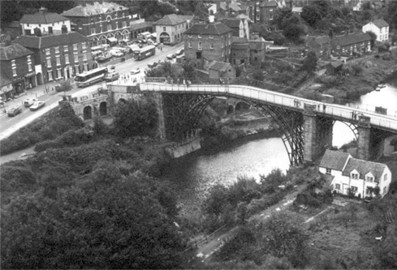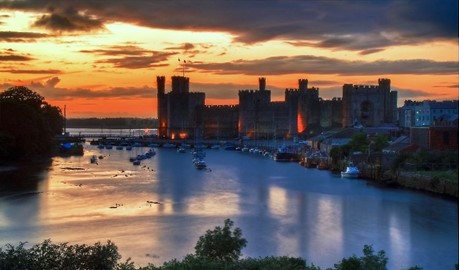category :: cultural
Troy
The Archaeological Site of Troy, a UNESCO World Heritage site in Turkey, is renowned for its historical significance as the setting of the Trojan War from ancient Greek mythology. Excavations have revealed multiple layers of settlements spanning over 3,000 years, showcasing a blend of Bronze Age fortifications, temples, and artifacts. This site offers valuable insights into early urban development and intercultural exchanges in the ancient world. Today, it stands as a testament to human history, attracting ... Read More
Selimiye Mosque
The Selimiye Mosque, a UNESCO World Heritage site in Turkey, is an architectural masterpiece designed by the renowned Ottoman architect Mimar Sinan in the 16th century. Completed in 1575, it exemplifies the pinnacle of Ottoman Islamic architecture with its grand central dome, slender minarets, and intricate interior decorations featuring Iznik tiles and calligraphy. Built during the reign of Sultan Selim II, the mosque reflects the empire’s cultural and artistic zenith, serving as both a place of worship an... Read More
Çatalhoyuk
The Neolithic Site of Çatalhöyük, a UNESCO World Heritage site in Turkey, is one of the world’s oldest known human settlements, dating back to around 7500–5700 BCE. This prehistoric village is renowned for its well-preserved mudbrick houses, intricate wall paintings, and evidence of early agriculture and religious practices, offering a rare glimpse into Neolithic life. Its unique layout, with homes accessed via rooftops and no streets, reflects an egalitarian community that thrived for over a millennium. Ça... Read More
Bursa and Cumalikizik
Bursa and Cumalıkızık, a UNESCO World Heritage site in Turkey, represent the birthplace of the Ottoman Empire, showcasing its early urban and rural development from the 14th century. Bursa features historic kulliyes—complexes with mosques, madrasahs, and tombs—built by the first Ottoman sultans, reflecting a unique city planning system tied to the waqf charity foundation. Cumalıkızık, a well-preserved village, offers a glimpse into traditional Ottoman rural life with its colorful, cobblestoned streets and a... Read More
Pergamon
Pergamon, a UNESCO World Heritage site in Turkey, is an ancient city renowned for its historical and cultural significance. Founded in the 3rd century BCE, it became a major center of Hellenistic civilization, boasting impressive structures like the steep theater, the Altar of Zeus, and one of the ancient world’s great libraries. The city later flourished under Roman rule, adding temples, aqueducts, and a renowned healing center, the Asklepieion. Today, its well-preserved ruins offer a glimpse into its past... Read More
Ephesus
Ephesus, a UNESCO World Heritage site in Turkey, is an ancient city renowned for its well-preserved ruins dating back to the 10th century BC. Once a thriving Greek and Roman metropolis, it boasts iconic structures like the Temple of Artemis, one of the Seven Wonders of the Ancient World, and the grand Library of Celsus. The site also holds historical significance as a center of early Christianity, with ties to St. Paul and the Virgin Mary. Today, it stands as a testament to ancient architecture, culture, an... Read More
Diyarbakir Fortress and Hevsel Gardens
The Diyarbakır Fortress and Hevsel Gardens, a UNESCO World Heritage site in Turkey, represent a remarkable cultural landscape along the Upper Tigris River Basin. The fortress, with its imposing basalt walls and towers, has been a strategic stronghold since ancient times, reflecting the influence of Hellenistic, Roman, Byzantine, Islamic, and Ottoman civilizations. Adjacent to it, the fertile Hevsel Gardens have sustained the city with food and water for millennia, supporting a rich biodiversity, including o... Read More
Ani
The Archaeological Site of Ani, a UNESCO World Heritage site in Turkey, is a medieval city renowned for its historical and cultural significance. Once a thriving capital of the Armenian Kingdom, it features remarkable examples of ecclesiastical and secular architecture, including churches, mosques, and a cathedral, dating from the 10th to 13th centuries. The site reflects a blend of Armenian, Georgian, and Islamic influences, showcasing its role as a crossroads of civilizations. Today, its well-preserved ru... Read More
Aphrodisias
Aphrodisias, a UNESCO World Heritage Site in Turkey, is an ancient city renowned for its well-preserved Roman ruins and exceptional marble sculptures, dedicated to Aphrodite, the Greek goddess of love. Founded in the 2nd century BC, it flourished as a center of art and culture, boasting structures like the Temple of Aphrodite, a grand stadium, and a theater. Its nearby marble quarries fueled a celebrated sculpture school, producing works admired across the Roman Empire. Inscribed on the UNESCO list in 2017,... Read More
Gobekli Tepe
Göbekli Tepe, a UNESCO World Heritage site in Turkey, is an ancient archaeological marvel dating back to the Pre-Pottery Neolithic period, around 9600–7000 BCE. Discovered in 1994, it features massive T-shaped limestone pillars arranged in circles, adorned with intricate carvings of animals and human figures, suggesting it served as a ritual or ceremonial center. Predating Stonehenge by over 6,000 years, this site challenges traditional views of early human civilization, revealing a complex society capable ... Read More
Istanbul
Istanbul, a UNESCO World Heritage site in Turkey, is a historic city famed for its rich cultural tapestry, blending Eastern and Western influences. Once known as Constantinople, it boasts iconic landmarks like the Hagia Sophia, a marvel of Byzantine architecture, and the Topkapi Palace, a testament to Ottoman grandeur. Its strategic location along the Bosphorus has shaped its legacy as a vibrant crossroads of civilizations, trade, and tradition. Today, it remains a captivating destination, preserving centur... Read More
Ancient Merv
Ancient Merv, a UNESCO World Heritage site in Turkmenistan, stands as a testament to millennia of human civilization, once thriving as a key stop on the Silk Road. This archaeological treasure showcases remnants of successive empires, including the Achaemenids, Parthians, Sassanids, and Islamic dynasties, with structures like mausoleums, mosques, and fortified walls. Its historical significance lies in its role as a cultural and economic hub, blending Eastern and Western influences until its decline after a... Read More
Kunya Urgench
Kunya-Urgench, a UNESCO World Heritage site in Turkmenistan, is a historic city that flourished as a major trade and cultural center along the Silk Road from the 10th to 14th centuries. Once the capital of the Khwarazmian Empire, it features remarkable architectural remnants, including the 11th-century Kutlug Timur Minaret, one of the tallest in Central Asia, and the Turabek Khanum Mausoleum, renowned for its intricate tile work and dome. The site reflects a blend of Islamic architecture and regional influe... Read More
Fortresses of Nisa
The Parthian Fortresses of Nisa, a UNESCO World Heritage Site in Turkmenistan, are the remnants of an ancient capital of the Parthian Empire, a major power from the mid-3rd century BC to the 3rd century AD. This archaeological site features two tells—Old and New Nisa—showcasing unexcavated ruins that blend traditional Parthian culture with Hellenistic and Roman influences, evident in richly decorated structures tied to domestic, state, and religious life. Strategically located at a crossroads, it served as ... Read More
Tombs of Buganda Kings
The Tombs of Buganda Kings, a UNESCO World Heritage Site in Uganda, serve as the burial ground for four kabakas (kings) of the Buganda Kingdom, highlighting their spiritual and political significance to the Ganda people. Constructed in 1882 as a palace before being transformed into a royal cemetery in 1884, the site features the Muzibu Azaala Mpanga, a remarkable circular structure with a thatched dome, showcasing traditional Buganda architecture using organic materials like wood and reeds. Recognized in 20... Read More
Kyiv
Saint-Sophia Cathedral and Kyiv-Pechersk Lavra, a UNESCO World Heritage site in Ukraine, represent remarkable examples of Eastern Orthodox architecture and monastic life. The cathedral, dating back to the 11th century, features stunning mosaics and frescoes, reflecting its historical role as a spiritual and cultural center. Kyiv-Pechersk Lavra, a sprawling monastery complex, is renowned for its underground caves, golden-domed churches, and centuries-old relics, attracting pilgrims and visitors alike. Togeth... Read More
L'viv
L'viv Historic Centre, a UNESCO World Heritage site in Ukraine, is renowned for its well-preserved architectural ensemble spanning several centuries. The site showcases a blend of Eastern European, Italian, and German influences, evident in its churches, cathedrals, and public buildings. Founded in the medieval period, it thrived as a cultural and economic hub, reflected in its cobblestone streets and historic charm. Today, it stands as a testament to Ukraine's rich history and resilience.
Residence of Bukovinian and Dalmatian Metropolitans
The Residence of Bukovinian and Dalmatian Metropolitans, a UNESCO World Heritage site in Ukraine, is a striking example of 19th-century historicist architecture, designed by Czech architect Josef Hlavka between 1864 and 1882. This grand complex, originally built as a bishop’s residence, seminary, and monastery, blends Byzantine, Gothic, and Baroque styles, reflecting the Orthodox Church’s cultural identity under Austro-Hungarian rule. Today, it serves as part of a national university, showcasing its well-pr... Read More
Tauric Chersonese
Tauric Chersonese, a UNESCO World Heritage Site in Ukraine, is an ancient city founded by Dorian Greek colonists in the 5th century BC on the northern shores of the Black Sea. This archaeological treasure encompasses the remains of a thriving polis, including public buildings, residential areas, and early Christian monuments, alongside its chora—well-preserved agricultural plots that once supported vineyards vital to the city’s economy. Inscribed on the UNESCO list in 2013, it showcases a remarkable blend o... Read More
Al Ain
Al Ain, a UNESCO World Heritage site in the United Arab Emirates, is an ancient oasis city renowned for its rich history and cultural significance. Known as the 'Garden City,' it features well-preserved Bronze Age tombs, traditional falaj irrigation systems, and the historic Al Jahili Fort, reflecting its importance as a trade and agricultural hub along ancient caravan routes. The city’s archaeological sites, including Hili and Bidaa Bint Saud, offer insights into millennia of human settlement, making it a ... Read More
Ironbridge Gorge
Ironbridge Gorge, a UNESCO World Heritage Site in the UK, is renowned as the birthplace of the Industrial Revolution. This historic valley features the world’s first iron bridge, constructed in 1779, symbolizing a pivotal moment in engineering and industrial history. The site encompasses a well-preserved collection of 18th-century industrial landmarks, including furnaces, factories, and workers’ housing, set against a picturesque riverside landscape. It offers a unique glimpse into the technological advance... Read More
Gwynedd
The Castles and Town Walls of King Edward in Gwynedd, a UNESCO World Heritage Site in the UK, are renowned as premier examples of late 13th and early 14th-century military architecture in Europe. Built under King Edward I between 1283 and 1330, this collection includes four castles—Beaumaris, Harlech, Caernarfon, and Conwy—along with the fortified towns of Caernarfon and Conwy, designed by the masterful architect James of St. George. These well-preserved structures showcase innovative concentric designs and... Read More
Blenheim Palace
Blenheim Palace, a UNESCO World Heritage Site in the UK, is an impressive 18th-century Baroque residence built for John Churchill, the 1st Duke of Marlborough, following his victory at the Battle of Blenheim. Designed by Sir John Vanbrugh, it showcases grand architecture, ornate interiors, and extensive landscaped gardens crafted by Capability Brown. The palace also holds historical significance as the birthplace of Sir Winston Churchill. Today, it serves as a family home, tourist attraction, and venue for ... Read More
Bath
The City of Bath, a UNESCO World Heritage Site in the UK, is renowned for its well-preserved Roman baths, dating back to 43 AD, which showcase ancient engineering and architecture. Its elegant Georgian buildings, including the iconic Royal Crescent, reflect 18th-century urban design and attract visitors worldwide. The city’s natural hot springs, the only ones in Britain, have historically drawn people for their believed healing properties, blending cultural significance with historical charm.
New Lanark
New Lanark, a UNESCO World Heritage Site in the UK, is a remarkably preserved 18th-century cotton mill village founded by David Dale and later managed by Robert Owen, a social reformer. Established in 1786, it became a pioneering model for industrial communities, showcasing innovative worker welfare practices, including fair wages, education, and healthcare. The site features historic mills, worker housing, and a school, set against a picturesque riverside backdrop, reflecting its significance in industrial... Read More

